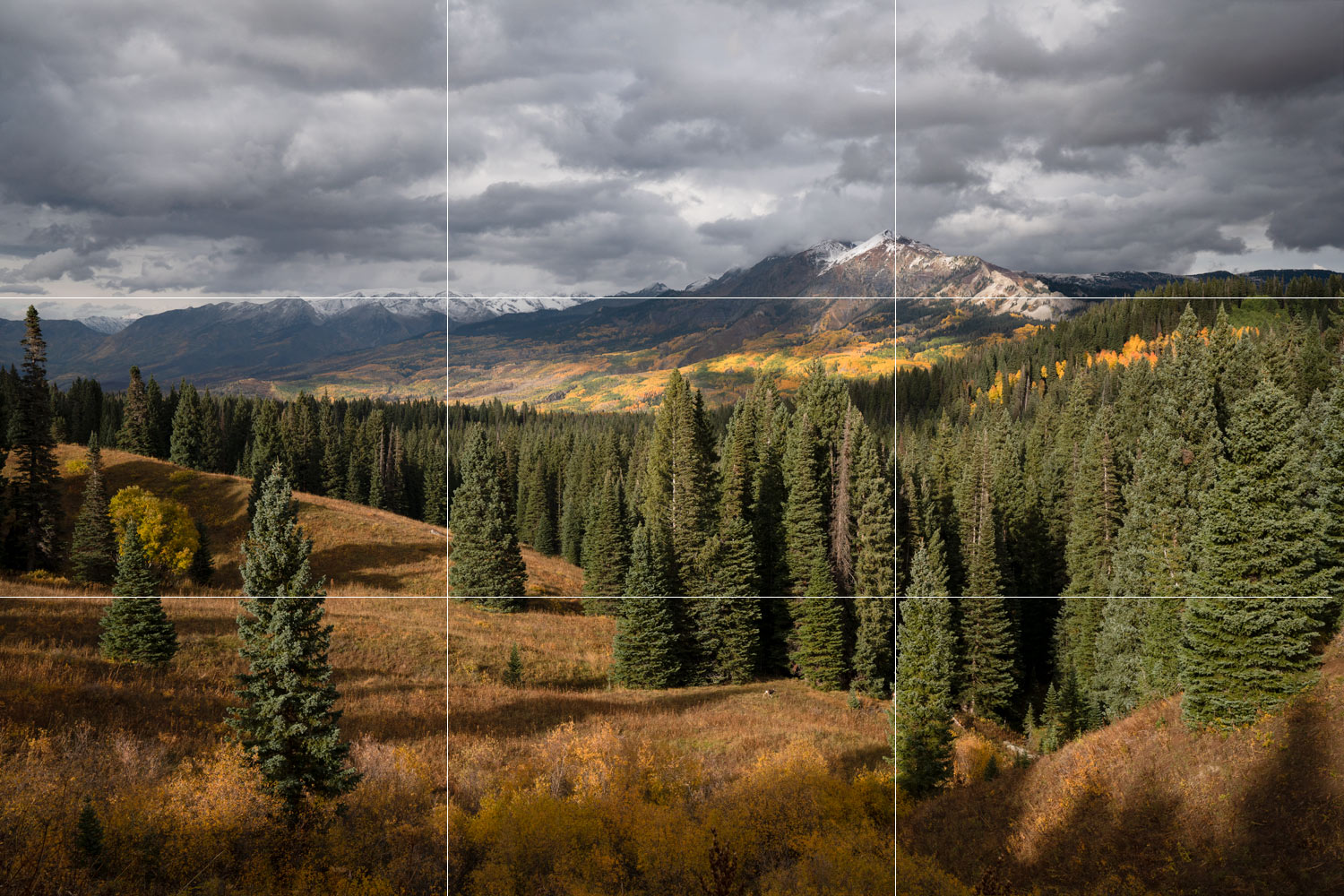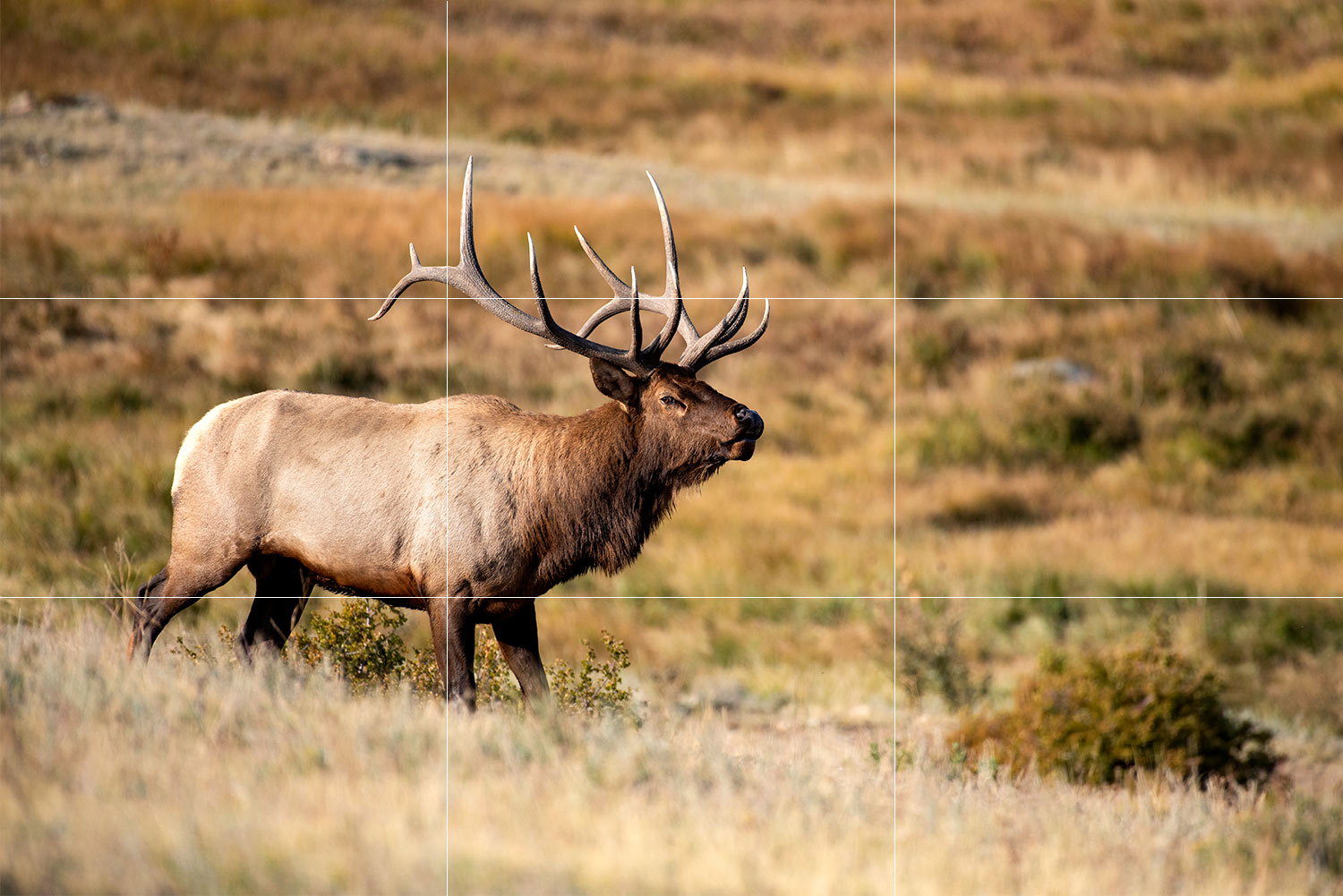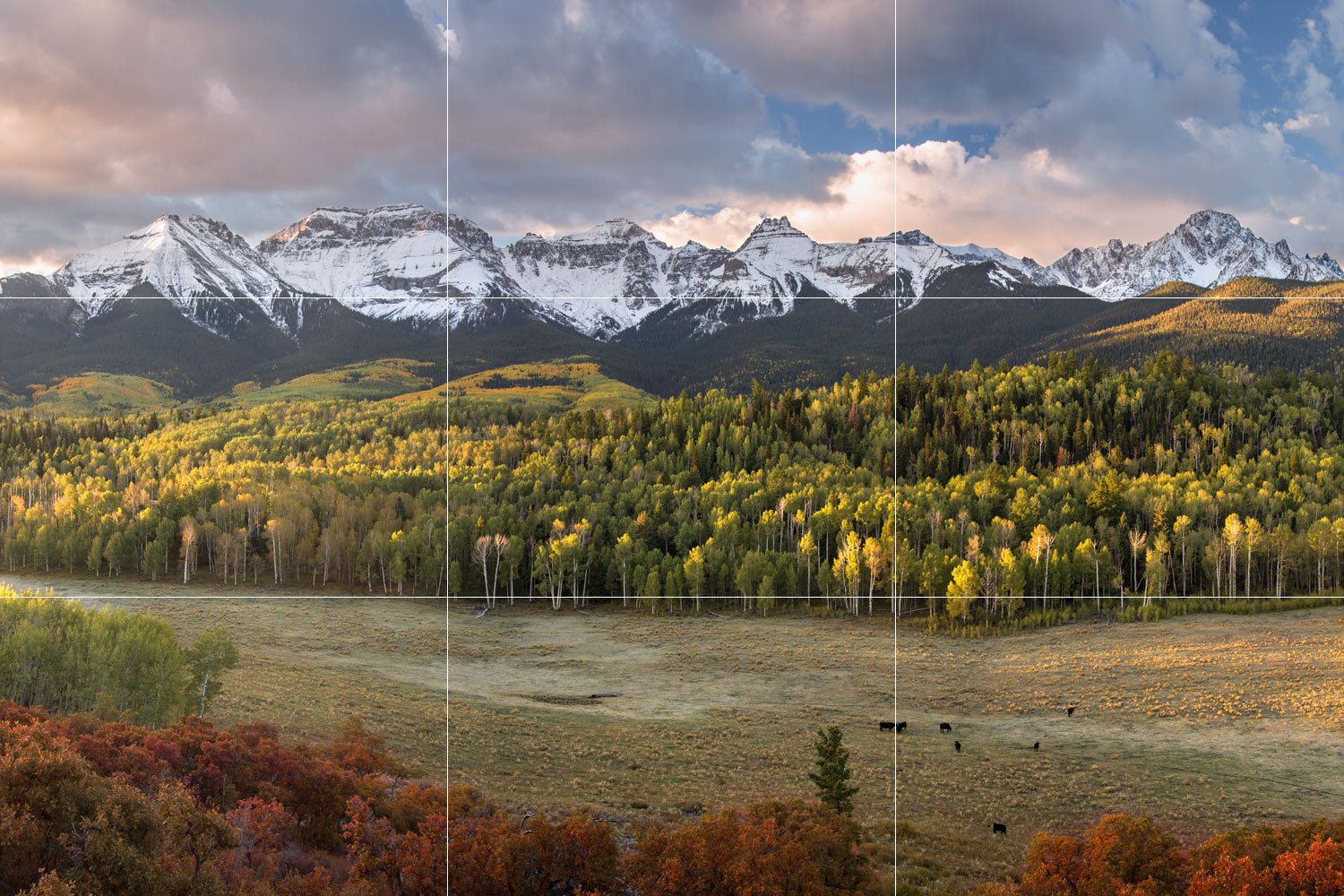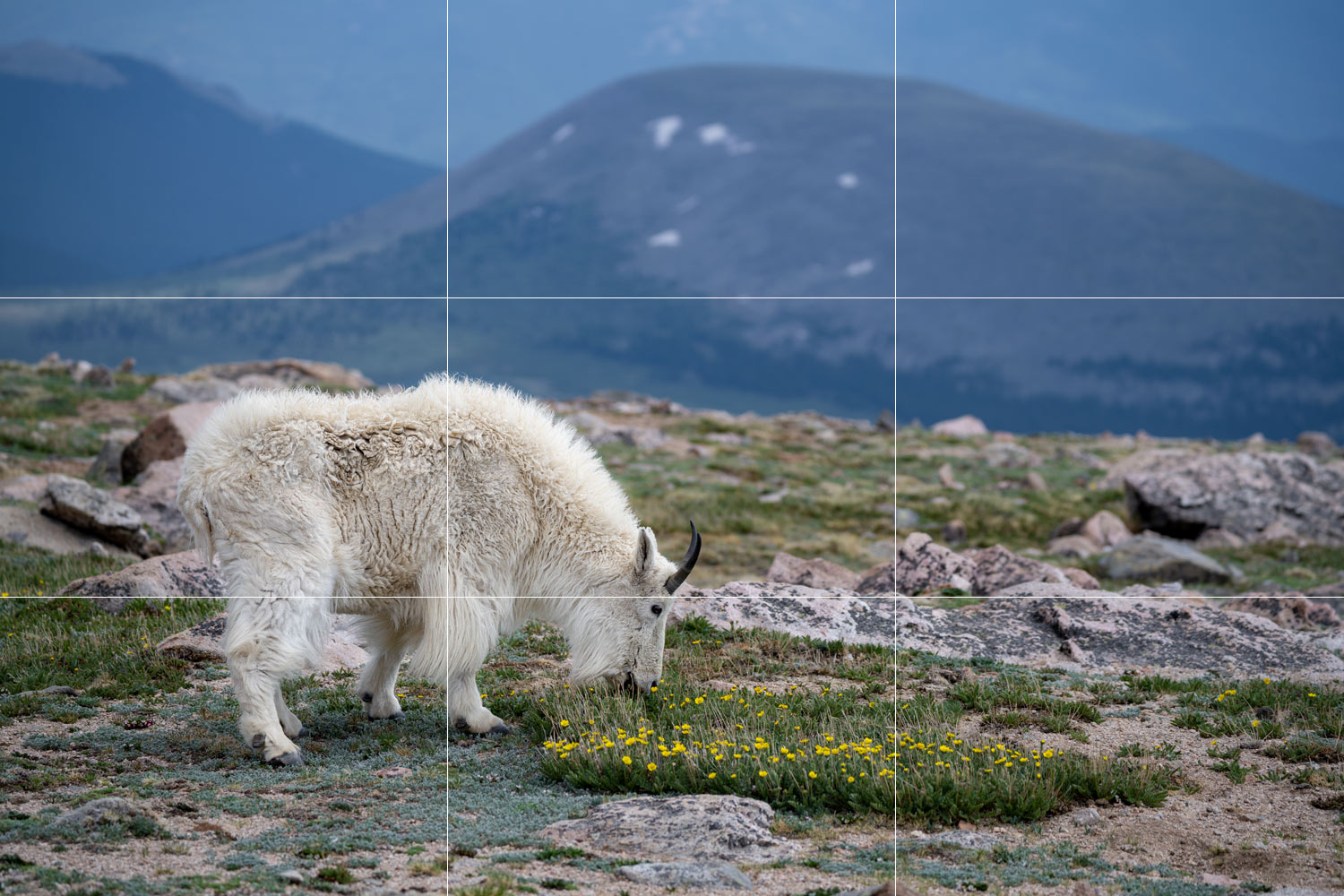
I’m not big on rules when it comes to creativity. However, most of us could use a nudge in the right direction when we’re still trying to find our bearings. The rule of thirds is a simple and impactful way to help you achieve balanced compositions until you’ve developed this sense intuitively. Essentially, it helps avoid perfect symmetry in photos.
Research shows that people innately favor images that don’t have 50/50 symmetry or perfectly centered objects. Using the rule of thirds appeases this human inclination by ensuring that compositions are not split in half and subjects aren’t centered. It helps ensure that you position large elements like mountains or sky to occupy 1/3 or 2/3 of the photo, and single subjects off to one side.

This image happens to fit well into thirds. The sky begins on the top third and the peak is intersected by the right third. If the peak were centered, the picture wouldn’t look as good because it would be too symmetrical.
To use the rule of thirds, divide the composition into an equal 3×3 grid. The main elements should be placed within or along a line. In a landscape photo for example, the edges of the foreground and the sky should be placed along a line. This ensures that neither will be placed in the center. The rule places emphasis. Positioning the horizon along the bottom line emphasizes the sky, and on the top line emphasizes the foreground.
Lines should intersect single elements like an animal in a field. If you place the animal along a line, it will be off to one side. Odd shapes or diagonal lines that don’t conform to a grid can still follow the rule simply by not being centered. Modern cameras usually have an option to overlay a grid of thirds in the viewfinder.

The rule of thirds is met because the left vertical thrird intersects the Elk’s center and his body is contained in the middle horizontal third.
A Bull Elk standing off to one side rather than perfectly centered can imply motion and that there’s more to the story. In the case of the Elk, it creates a path for him to move into and gives a sense of space beyond the photo. Additionally, the eye may prefer scanning both sides of the photo rather than being immediately guided to the center, which could be part of the human preference for off-center composition.
Arranging the photo into thirds also helps to create a cohesive composition. For example, a landscape photo with the sky in the top third and a field in the bottom third creates a more harmonious image, whereas having the sky in the top half and the field in the bottom half would look like 2 photos that could be broken in half.

The rule of thirds is a simplified version of Euclid’s “Golden ratio”, which suggests using a slightly different ratio with further criterion for object placement. Because compositions in nature rarely fit perfectly within the confines of any rule anyway, I suggest just focusing on the rule of thirds. Both rules will produce basically the same outcome, with one being more complicated to understand.
The rule of thirds should be used as a rough guide and not forced upon the composition if it doesn’t feel right. It’s also okay if the divisions are not perfect thirds as long as the objective of avoiding centered compositions or 50/50 balance is achieved. Once you develop an eye for composition, you’ll find that many of your images will naturally conform to the rule of thirds without conscious effort.
 Bryan Maltais is an award-winning professional photographer, film-maker and founder of Wilderness Shots Photography Workshops. He runs Wilderness Shots Nature Photography Workshops, bringing photography enthusiasts to the most beautiful locations in the American West with expert instruction. He’s been speaking, instructing and publishing for the past 20 years.
Bryan Maltais is an award-winning professional photographer, film-maker and founder of Wilderness Shots Photography Workshops. He runs Wilderness Shots Nature Photography Workshops, bringing photography enthusiasts to the most beautiful locations in the American West with expert instruction. He’s been speaking, instructing and publishing for the past 20 years.

